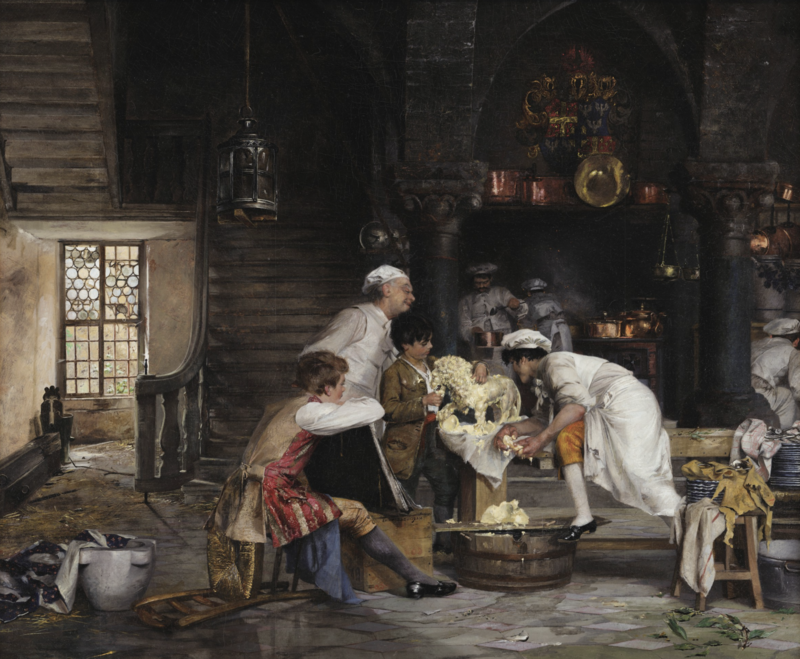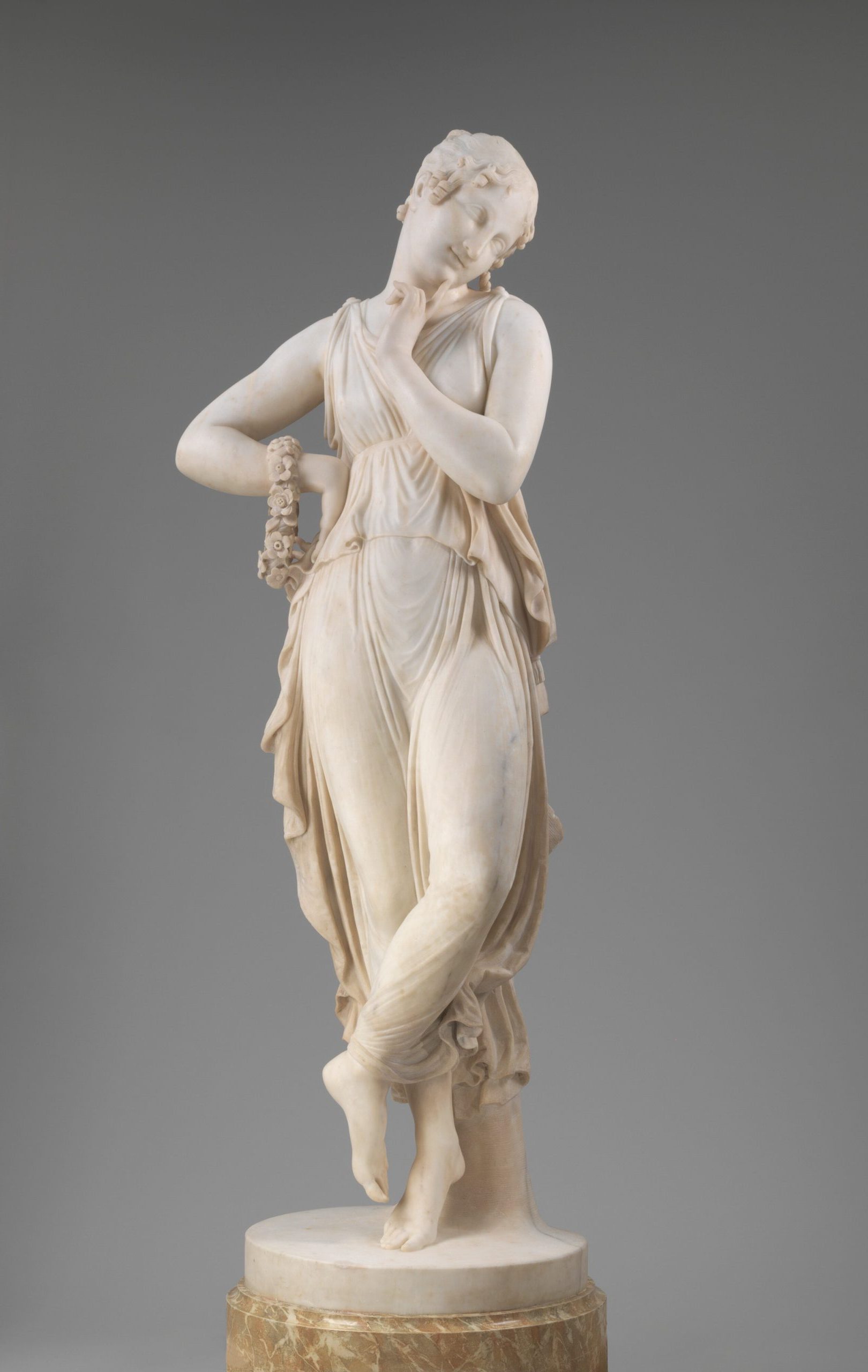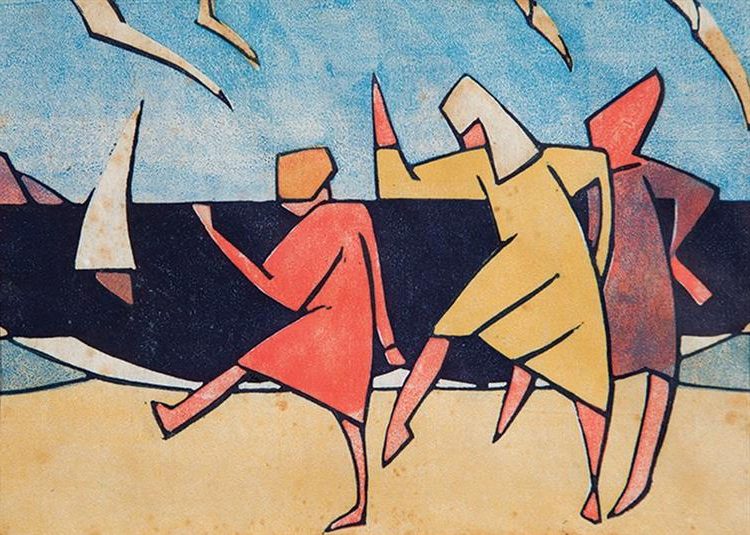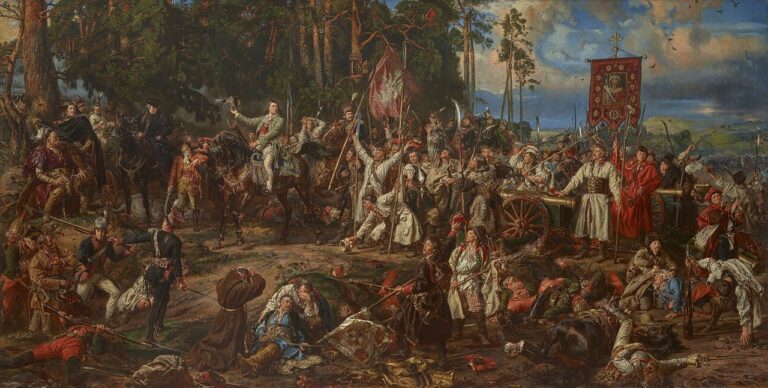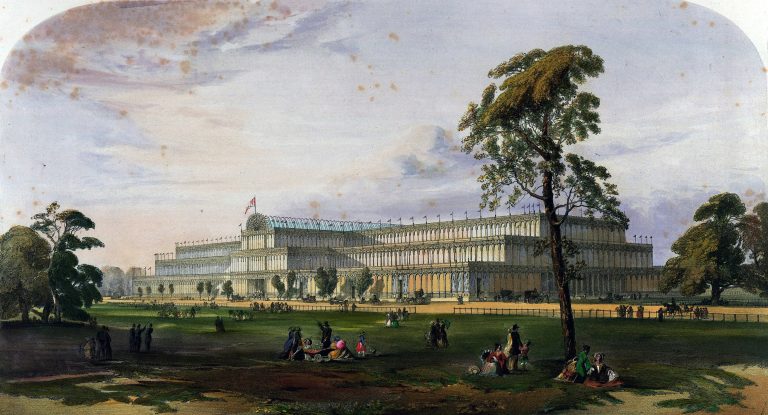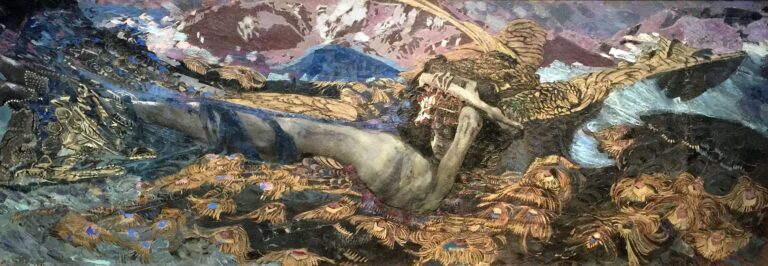Antonio Canova Painter: Neoclassical Sculptor’s Lesser-Known Artistic Pursuits
Born: 1 November 1757, Possagno, Republic of Venice
Death: 13 October 1822, Venice, Lombardy–Venetia
Art Movement: Neoclassicism
Nationality: Italian
Influenced By: Greek and Roman art
Institution: Accademia di Belle Arti di Venezia
Antonio Canova Painter: Neoclassical Sculptor’s Lesser-Known Artistic Pursuits
Antonio Canova: Master of Neoclassical Sculpture
Antonio Canova shaped the world of sculpture in the late 18th and early 19th centuries. His works defined the Neoclassical style and set new standards for marble carving.
Biography and Artistic Milestones
Antonio Canova was born in 1757 in Possagno, Republic of Venice. He showed talent for sculpture at a young age.
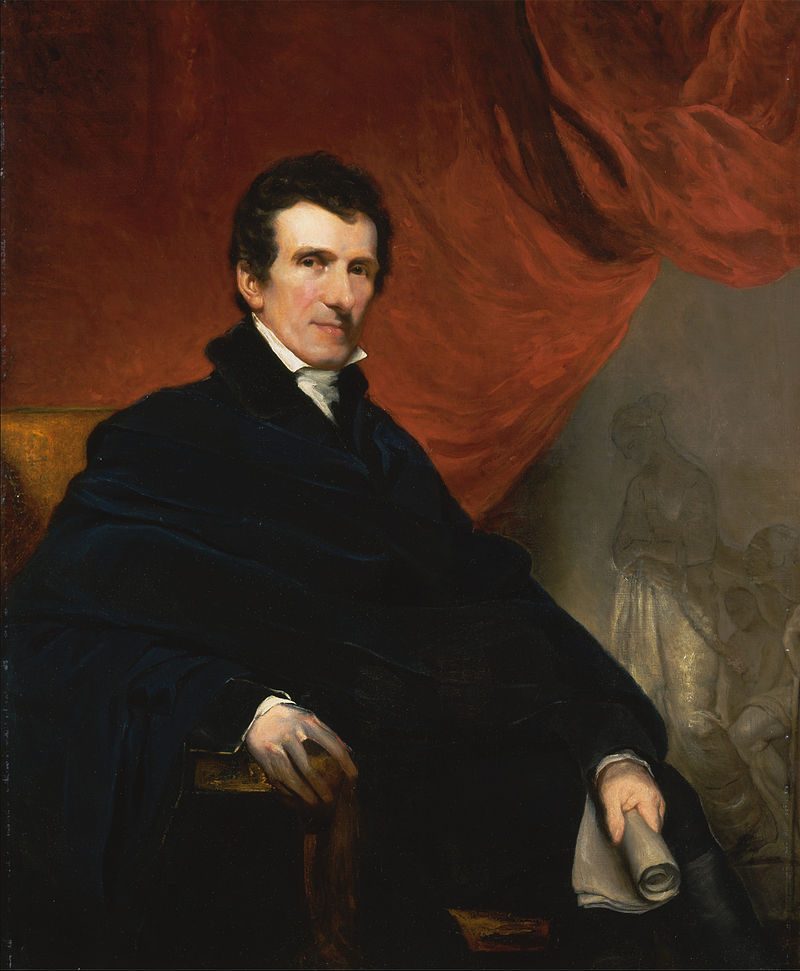
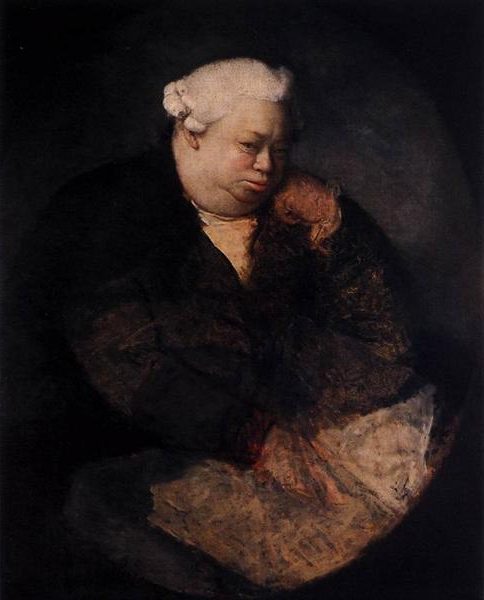
In 1779, Canova moved to Rome to study ancient art. His first major work, “Theseus and the Minotaur,” brought him fame in 1782.
Canova went on to create many important sculptures for popes, royalty, and wealthy patrons. He became known for his smooth, polished marble technique. His sculptures had a calm, idealized beauty inspired by ancient Greek and Roman art.
Canova died in 1822 in Venice. He left behind a large body of work that defined Neoclassical sculpture.
Influence and Contributions to Neoclassical Art
Canova helped revive interest in classical art and culture. His sculptures showed ideal human forms and mythological subjects.
He developed new methods for finishing marble. Canova used fine abrasives and wax to give his sculptures a soft, skin-like surface.
His work influenced many other artists. Canova’s style spread across Europe and shaped sculpture for decades.
He also worked to preserve ancient artworks. Canova helped recover art stolen by Napoleon and return it to Italy.
Signature Works
Some of Canova’s most famous sculptures include:
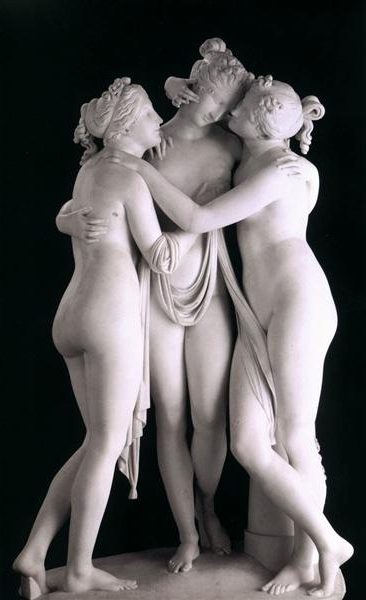
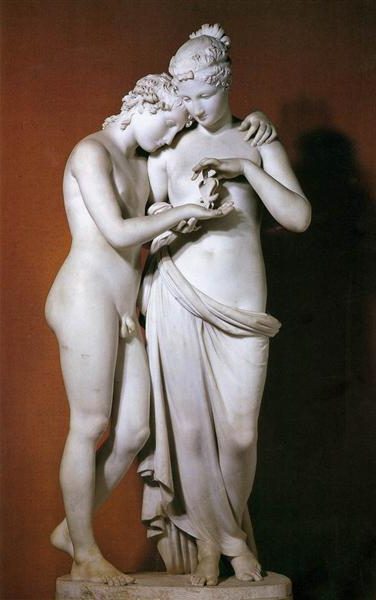
- “Psyche Revived by Cupid’s Kiss” (1787)
- “Venus Victrix” (1805-1808)
- “The Three Graces” (1814-1817)
These works show Canova’s skill with marble and his focus on graceful, idealized figures. He often depicted scenes from classical myths.
Canova also made portraits of famous people. His statue of Napoleon as Mars the Peacemaker (1802-1806) is well-known.
His tomb sculptures, like the one for Pope Clement XIII, were very influential. They showed a new, more restrained style of memorial art.
Canova’s Legacy in Art and Collections
Antonio Canova’s influence on art extends far beyond his lifetime. His marble sculptures can be found in major museums and galleries around the world.
Notable Marble Sculptures
Canova’s most famous works include “Cupid and Psyche,” “Perseus with the Head of Medusa,” and “Theseus and the Minotaur.” These sculptures showcase his mastery of marble and his ability to capture emotion and movement in stone.
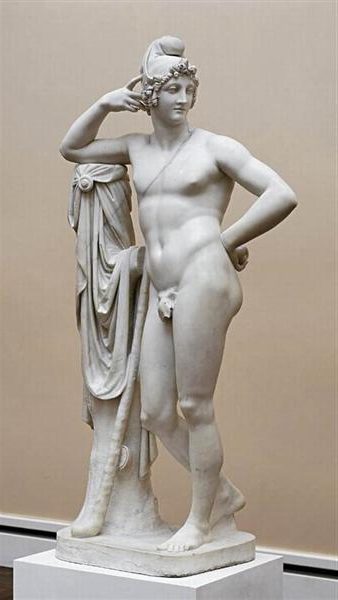
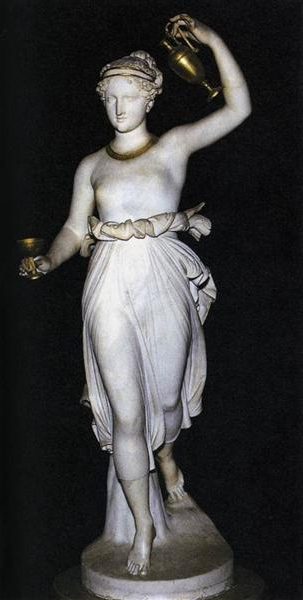
“Daedalus and Icarus” is another standout piece, displaying the artist’s skill in depicting human forms. The sculpture shows the mythical figures in a moment of tender embrace before their ill-fated flight.
Canova’s bust of Napoleon is also well-known. It presents the French leader in a classical style, drawing parallels to ancient Roman emperors.
Collections and Galleries Worldwide
Canova’s works are housed in many top museums. The Louvre in Paris displays his “Cupid and Psyche” sculpture. The Metropolitan Museum of Art in New York City has several of his pieces, including “Perseus with the Head of Medusa.”
In Italy, the Galleria Borghese in Rome features a large collection of Canova’s sculptures. The Hermitage Museum in St. Petersburg, Russia also holds important works by the artist.
Many of Canova’s sculptures were inspired by ancient Greek and Roman art. His interpretation of the Apollo Belvedere, for example, shows his deep respect for classical forms.
Understanding Canova’s Artistic Context
Antonio Canova drew from ancient traditions while breaking away from Baroque and Renaissance styles. His work bridged classical and contemporary art.
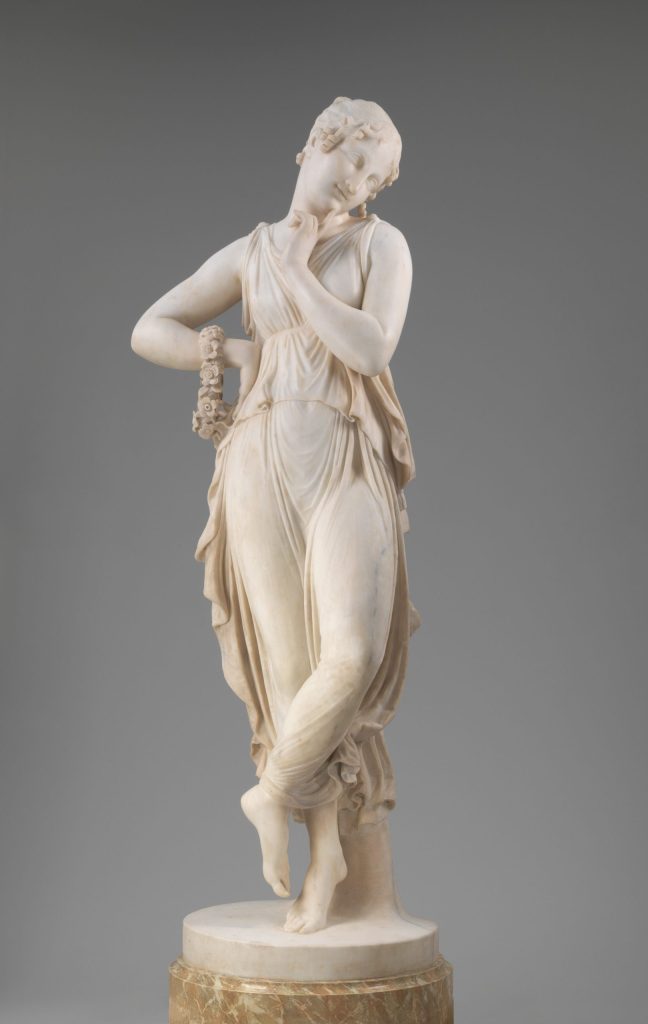
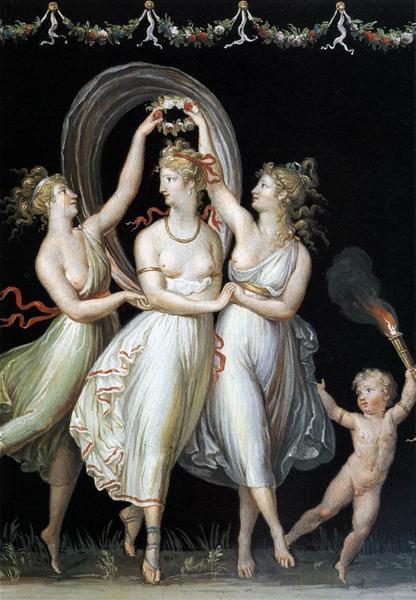
Inspiration from Ancient Traditions
Canova looked to Greek and Roman art for inspiration. He studied classical sculpture closely, focusing on its forms and themes. This research shaped his artistic vision.
Ancient mythological subjects became central to his work. He crafted figures like Psyche, Cupid, and Venus with great skill.
Canova aimed to capture the idealized beauty of classical art. He polished his marble sculptures to a high shine, mimicking ancient techniques.
His style helped spark a renewed interest in classical art. This revival influenced many other artists of his time.
Distinction from Baroque and Renaissance Movements
Canova’s work differed from Baroque and Renaissance styles in key ways. He moved away from the dramatic, emotional style of Baroque art.

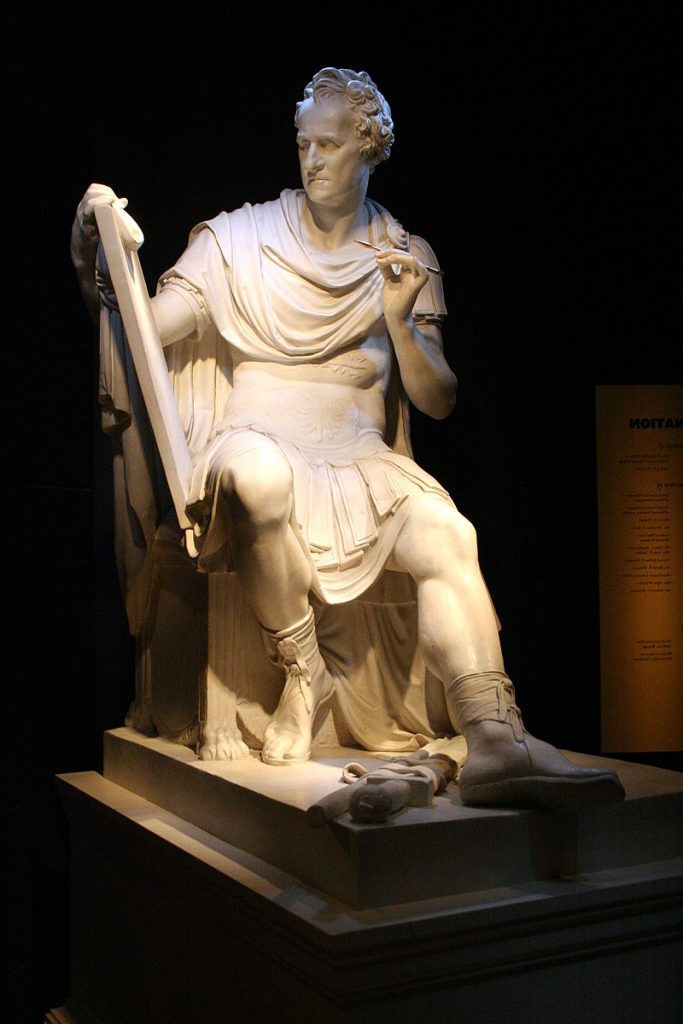
Instead, he focused on calm, balanced compositions. His figures had smooth, idealized forms rather than realistic details.
Canova’s sculptures showed restrained poses and expressions. This set them apart from the more dynamic Renaissance and Baroque works.
He used clean lines and simple shapes in his art. This approach contrasted with the ornate style popular in earlier periods.
Canova became a leader among Neoclassical artists. His work helped define this new movement in European art.
Frequently Asked Questions
Antonio Canova was a renowned Italian sculptor who made significant contributions to Neoclassical art. His work gained widespread acclaim and recognition during his lifetime.
What is the distinctive style associated with Antonio Canova’s artwork?
Canova’s style was marked by smooth, polished marble sculptures. He focused on creating idealized human forms inspired by classical Greek and Roman art.
His works often portrayed mythological figures and historical characters with grace and emotion. Canova’s attention to detail and ability to capture subtle expressions set him apart from other sculptors of his time.
What are some of Antonio Canova’s most acclaimed creations?
Some of Canova’s most famous works include “Psyche Revived by Cupid’s Kiss” and “The Three Graces.” These sculptures showcase his skill in depicting human emotions and relationships.
Other notable pieces are “Perseus with the Head of Medusa” and “Pauline Bonaparte as Venus Victrix.” These works demonstrate Canova’s mastery of both mythological subjects and portraiture.
What historical period did Antonio Canova’s work mainly contribute to?
Canova’s work was central to the Neoclassical movement of the late 18th and early 19th centuries. This period saw a revival of interest in classical art and culture.
His sculptures embodied the Neoclassical ideals of beauty, harmony, and balance. Canova’s work helped define the artistic standards of his era.
What influences shaped Antonio Canova’s artistic approach?
Canova drew inspiration from classical Greek and Roman art. He studied ancient sculptures and aimed to capture their idealized forms in his own work.
The Italian Renaissance also influenced Canova’s approach. He admired the works of Renaissance masters and sought to blend classical and Renaissance styles in his sculptures.
How did Antonio Canova impact the world of sculpture?
Canova’s work set new standards for sculpture during his lifetime. His techniques for working with marble inspired many other artists.
He helped revive interest in classical themes and styles. Canova’s influence extended beyond Italy, shaping sculpture throughout Europe.
What accolades or recognition did Antonio Canova receive for his work?
Canova was widely recognized as the leading sculptor of his time. He received commissions from royalty, nobility, and the Catholic Church.
Pope Pius VII made the artist a marquis for his contributions to art. Canova’s fame led to his works being sought after by collectors and museums across Europe.

